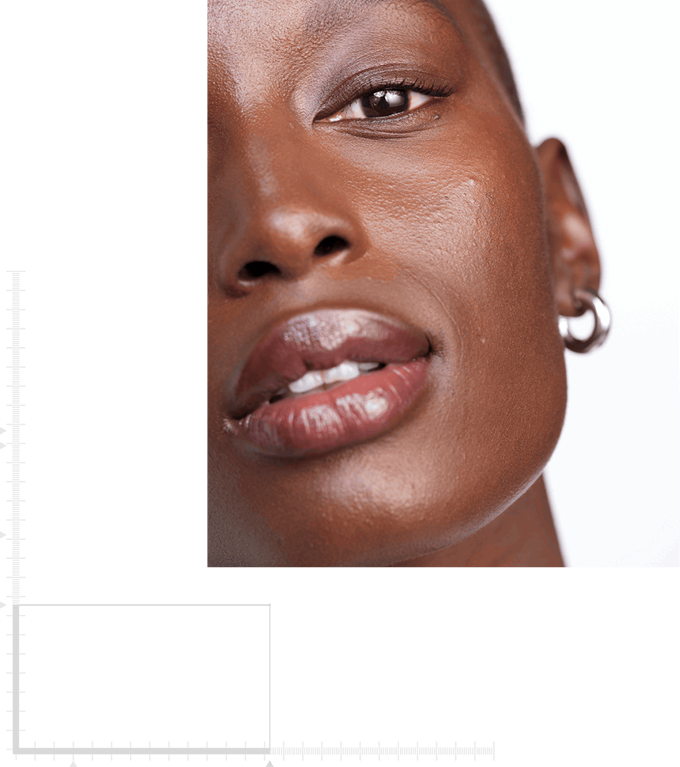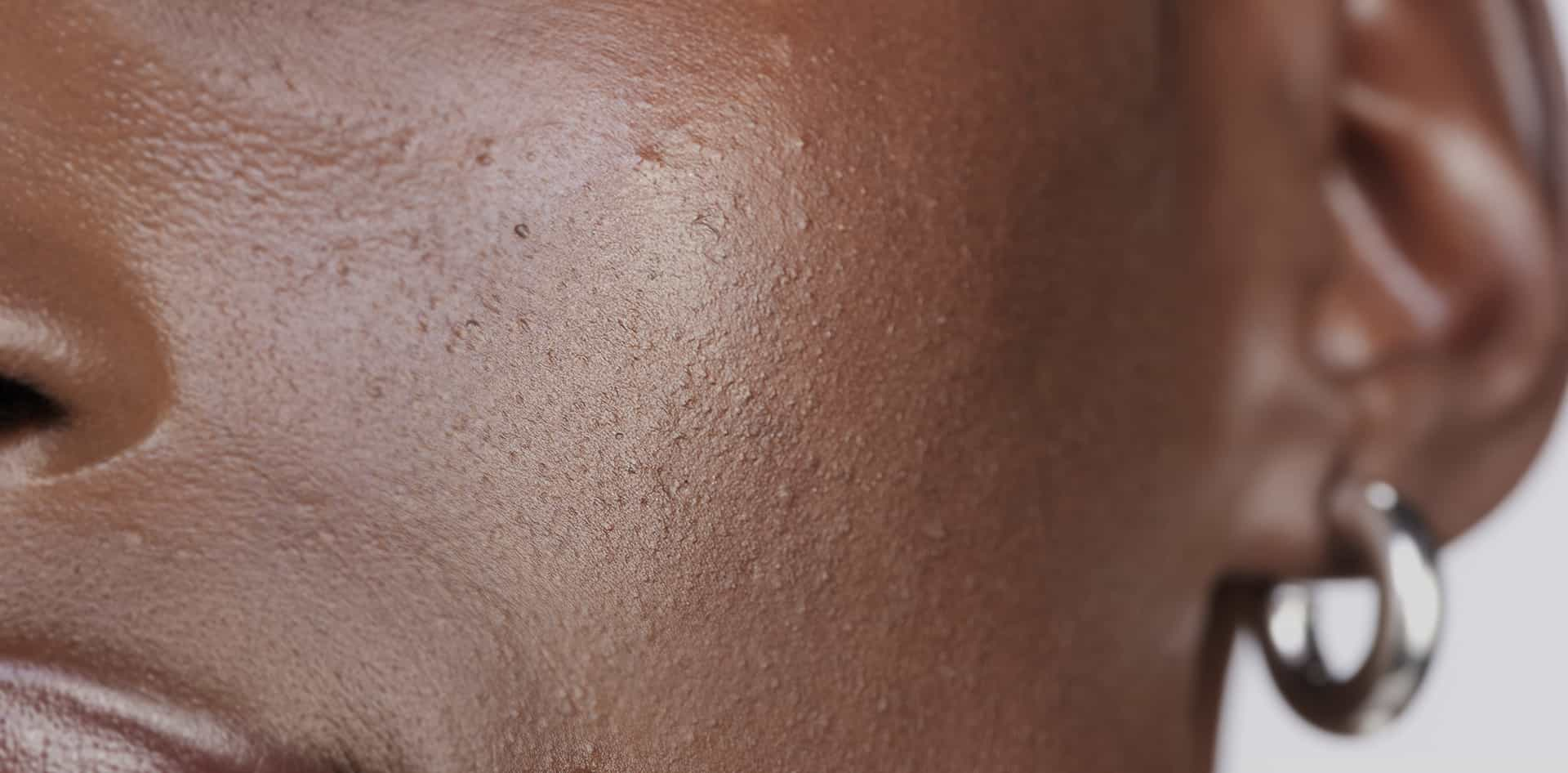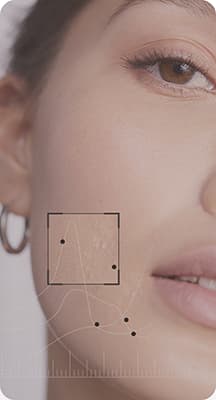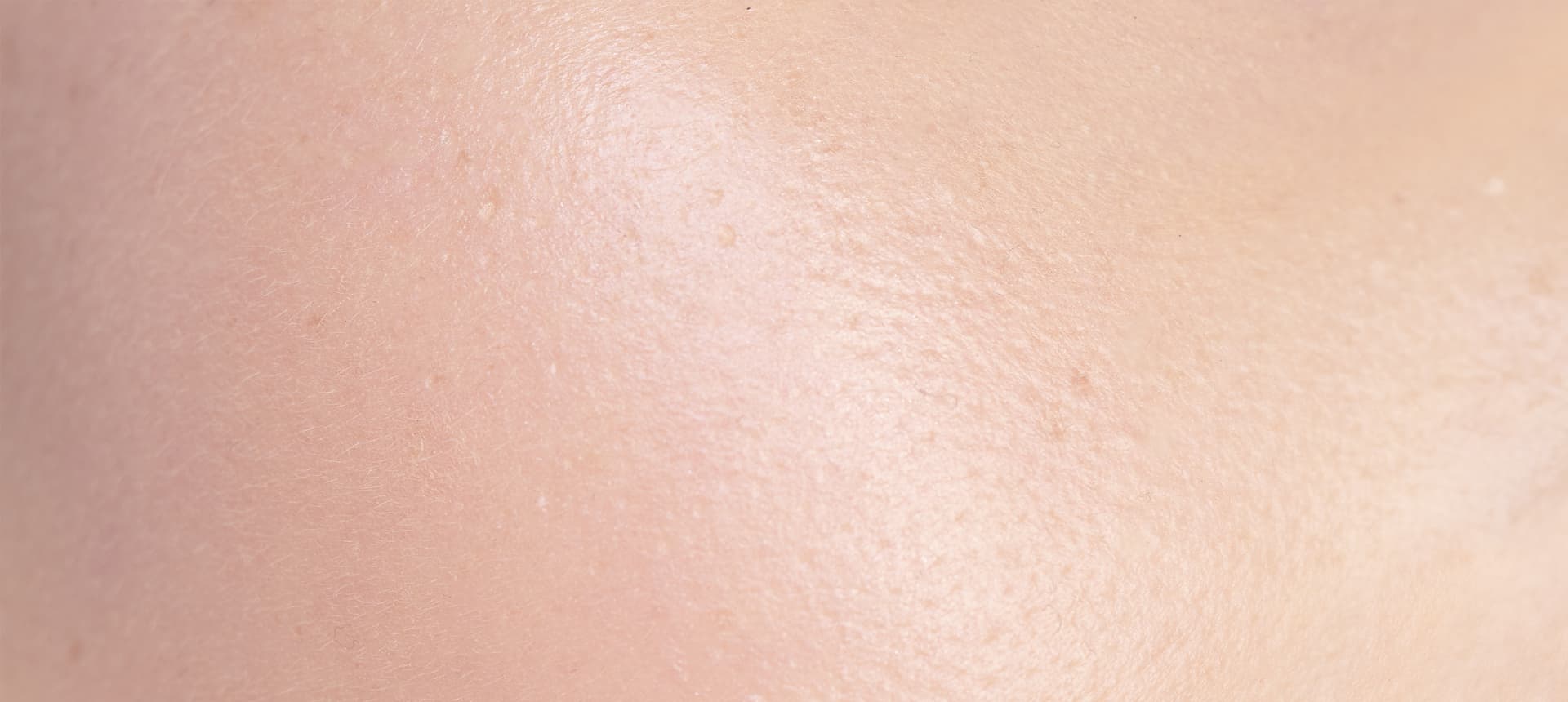“Exposome
accounts for
more than
{}
of skin aging”

Exposome Science:
At the service of skin’s healthy appearance
Skin’s healthy appearance has always been a quest for us. To create the best solutions for your skin, we developed an expertise based on the comprehensive study of the elements that affect its evolution over time. They are called “the exposome”.

The concept
The concept of the exposome comes initially from the cancer research field. It was first defined in 2005 by Professor Christopher Wild, former Director of the International Agency for Research on Cancer (IRAC) as “The cumulative measure of environmental influences and associated biological responses, including exposures from the environment, diet, behaviour, and endogenous processes”. 1, 2
When it comes to the skin, our lab research has shown that exposome is the combination of multiple influences: environmental, behavioral, and hormonal. And, above all: it’s their cumulative effect that can affect the skin’s biological functions and accelerate its ageing. In 2016, we turned these discoveries into a science: Skin Exposome Science.

Exposome factors:
The multiple elements affecting skin healthy appearance
Skin’s healthy appearance is significantly influenced by many external and internal exposome factors, worsened by their cumulative impact. 15
Environmental
factors
- UVs:
UVA, UVB, IR, blue light - Pollution:
chemical contaminants, Microparticles PM10 / PM2.5, ultrafine particles, ozone, insecticides etc - Climate changes:
temperature, humidity, atmospheric pressure variations

Behavioral
factors
- Diet:
nutrition, tobacco, alcohol - Psychological stress
- Lack of sleep
- Physical activity

Hormonal
factors
- Femininity
hormones variations:
puberty, menstrual cycle, pregnancy, menopause

The study of
the exposome
is a complex
and ambitious
project.
Understanding the exposome means taking into account an infinite number of variables.
That is to say, to take into account multiple influences such as environmental, behavioral, hormonal or the infinite biological skin diversity. Hence, each individual has his own exposome profile. Indeed, an individual will not be exposed to the same factors of the exposome as his neighbor, nor it will trigger the same biological damages on the skin. It is therefore fundamental to understand these factors and to study their cumulative and synergistic effect on the skin to propose personalized solution enhancing skin's potential at every stage of life. For instance, daily light combined with pollution, called Photopollution, may significantly impact skin healthy appearance and aggravate skin aging.”

Exposome impacts:
The effects on the skin
Skin is the human body's largest organ.
Its 4 main functions :
SKIN PHYSICAL BARRIER – SKIN PIGMENTATION – SKIN DEFENSE – SKIN STRUCTURE
are affected by the exposome influencing our skin’s healthy appearance, integrity and quality.
UVS
UVs are responsible for 80% of visible facial aging signs. They destroy collagen and elastic fibers leading to aging signs: wrinkles, loss of firmness, rough texture appearance and pigmentation disorders. 3, 4

Pollution
Pollution causes oxidative stress. It has been proven that it leads to skin aging signs especially dark spots and wrinkles. 5, 6
When combined with UV, it worsens even more skin aging signs. 7, 8

Climate
change
Climate changes such as temperature, humidity, atmospheric pressure can affect the skin barrier function. Cold temperature dries out the skin while warm temperature increases skin hydration and sebum production/sweating, resulting in breakouts, especially for oily skin types. 9, 10, 11, 12

Nutrition
Nutrition directly affects the appearance of our skin and its ability to resist external aggressions, such as pollution, UV rays and stress. A poor diet can cause premature skin aging as well as potential impacts on acne and skin issues (rosacea, atopic dermatitis, and psoriasis). 13

Psychological
stress
Psychological stress can have an impact on skin both in the short and long term. For example, women who are stressed often present an impaired skin barrier function leading to a drier and duller skin complexion in the short term. 14

Lack of
sleep
Lack of sleep impairs skin barrier function and accelerates overall skin ageing. Skin can look paler, and accentuated fine lines/wrinkles. The area around the eyes is particularly affected. 15, 16, 17

Hormone variation
Hormone variation, especially female hormones (such as estrogens and progesterone) can affect the skin structure and composition your entire life and especially during the menstrual cycle (imperfections, breakouts, sebum production increase), pregnancy (imperfections, breakouts, melasma) and menopause. 18, 19, 20, 21


Our solutions
against the exposome
To make skin stronger against the aggressions of Exposome, we put technology at your service: with personalized diagnosis on SkinConsultAI.com, created with dermatologists and skin health experts, you will know your skin priorities. This diagnosis will allow us to propose comprehensive care protocols answering your specific skin concerns with high safety standards.
Our mission to
move exposome
science forward
Our day-to-day mission is to make the science of skin health quality progress and make knowledge accessible to you. Since day one in 1931, Vichy is at the forefront of skin scientific research to accompany women at every stage of life. As a pioneer in Skin Exposome Science and sponsor of our annual research grant, we continue to fund and support the development of scientific knowledge regarding skin’s healthy appearance.

Vichy Exposome
publications
Our researches led in 2019 to the publication, by Vichy Exposome medical board, of “Skin and Exposome”, the first review presenting the biological and clinical impacts of Exposome on the skin, the latest knowledge on pollution impact by hair monitoring and the future perspectives.
To enrich the Exposome knowledge, Vichy publishes studies results every year in renowned dermatological journal or posters and accounts today for more than 30 scientific publications.
THE SKIN AGING EXPOSOME
Krutmann, J., et al., The skin aging exposome. Journal of Dermatological Science, 2017. 85 (3): p. 152-16.
THE INFLUENCE OF EXPOSOME ON ACNE
Dreno, B., et al., The influence of exposome on acne. J Eur Acad Dermatol Venereol, 2018. 32: p. 812-819.
ACNE EXPOSOME SURVEY
Dreno, B., et al., The role of exposome in acne: results from an international patient survey. J Eur Acad Dermatol Venereol, 2020. 34: p. 1057-1064.
MENOPAUSE AND SKIN SURVEY
LePillouer‐Prost, A., et al., Skin and menopause: women's point of view. J Eur Acad Dermatol Venereol, 2020. 34: p. 267-269.
SKIN BARRIER PROTECTION AGAINST EXPOSOME
Salsberg, J, et al., A review of protection against exposome factors impacting facial skin barrier function with 89% mineralizing thermal water. J Cosmet Dermatol, 2019. 18: p. 815– 820.
EXPOSOME IMPACTS SPANISH POPULATION
Buendía-Eisman, A., et al., Study of the Exposome Ageing-related Factors in the Spanish Population. Acta Dermato-Venereologica, 2020. 100 (5): p153.
EXPOSOME & SKIN
Passeron, T., et al., Clinical and biological impact of the exposome on the skin. J Eur Acad Dermatol Venereol, 2020. 34: p.4-25.
Appenzeller, B., et al., Skin exposome science in practice : current evidence on hair biomonitoring and future perspectives. J Eur Acad Dermatol Venereol, 2020. 34: p. 26-30.
Sources
(1)Wild, C.P., Complementing the genome with an "exposome": the outstanding challenge of environmental exposure measurement in molecular epidemiology. Cancer Epidemiol Biomarkers Prev, 2005. 14(8): p. 1847-50.
(2)Wild, C.P., The exposome: from concept to utility. Int J Epidemiol, 2012. 41(1): p. 24-32.
(3)Flament F, et al., Effect of the sun on visible clinical signs of aging in Caucasian skin. Clin Cosmet Investig Dermatol, 2013. 6: p.221-232.
(4)Liebel, F., et al., Irradiation of skin with visible light induces reactive oxygen species and matrix-degrading enzymes. J Invest Dermatol, 2012. 132(7): p. 1901-7.
(5)Ahuja, A., et al., Influence of Exogenous Factors on Skin Aging, in Text book of Aging Skin, M.A. Farage, K.W. Miller, and H.I. Maibach, Editors. 2017, Springer Berlin Heidelberg: Berlin, Heidelberg. p. 563-577.
(6)Flament, F., et al., A severe chronic outdoor urban pollution alters some facial aging signs in Chinese women. A tale of two cities. Int J Cosmet Sci, 2018. 40(5): p. 467-481.
(7)Soeur, J. et al., Photo-pollution stress in skin: Traces of pollutants (PAH and particulate matter) impair redox homeostasis in keratinocytes exposed to UVA1, Journal of Dermatological Science, 2017. 86 (2): p.162-169.
(8)Marrot L et al., Pollution and Sun Exposure: A Deleterious Synergy. Mechanisms and Opportunities for Skin Protection. Curr Med Chem, 2018. 25 (40): p. 5469-5486.
(9)Abe, T., et al., Seasonal variations in skin temperature, skin pH, evaporative water loss and skin surface lipid values on human skin. Chem Pharm Bull (Tokyo), 1980. 28(2): p. 387-92.
(10)Engebretsen, K.A., et al., The effect of environmental humidity and temperature on skin barrier function and dermatitis. J Eur Acad Dermatol Venereol, 2016. 30(2): p. 223-49.
(11)Spencer, T.S., et al., Temperature dependence of water content of stratum corneum. Br J Dermatol, 1975. 93(2): p. 159-64.
(12)Ishikawa, J., et al., Variations in the ceramide profile in different seasons and regions of the body contribute to stratum corneum functions. Arch Dermatol Res, 2013. 305(2): p. 151-62.
(13)Passeron, T., et al., Clinical and biological impact of the exposome on the skin. J Eur Acad Dermatol Venereol, 2020. 34: p. 4-25.
(14)Maarouf, M., et al., The impact of stress on epidermal barrier function: an evidence‐based review. Br J Dermatol, 2019. 181: p. 1129-1137.
(15)Krutmann, J., et al., The skin aging exposome. Journal of Dermatological Science, 2017. 85 (3): p. 152-16.
(16)Sundelin, T., et al., Cues of fatigue: effects of sleep deprivation on facial appearance. Sleep, 2013. 36(9): p. 1355-60.
(17)Flament, F., et al., How a working day-induced-tiredness may alter some facial signs in differently-aged Caucasian women. Int J Cosmet Sci, 2017. 39(5): p. 467-475.
(18)Zouboulis, C.C., et al., Sexual hormones in human skin. Horm Metab Res, 2007. 39(2): p. 85-95.
(19)Brincat MP., et al., Estrogens and the skin. Climacteric. 2005. 8(2): p.110-23
(20)Muizzuddin N., et al., Effect of systemic hormonal cyclicity on skin. J Cosmet Sci. 2005. 56(5): p. 311-21.
(21)Handel AC, et al., Melasma: a clinical and epidemiological review. An Bras Dermatol. 2014. 89(5): p. 771-82.